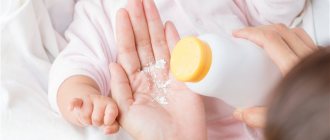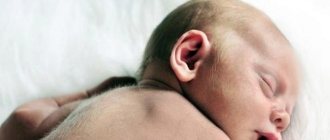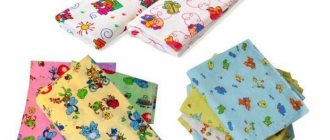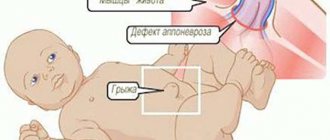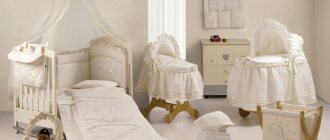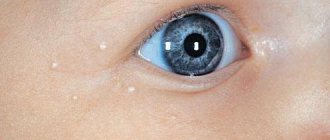Excellent health, absence of skin problems, good immunity in a newborn depends on whether the mother can properly carry out hygiene procedures.
Newborn hygiene is a necessary, daily stage of baby care, which includes several mandatory procedures.
If you do not maintain the cleanliness of a newborn’s body, then health and skin problems will certainly arise, which will have to be solved with the help of a doctor and medications. It is necessary to constantly care for your baby's skin; some procedures need to be carried out in the morning, others throughout the day.
Daily hygiene of a newborn
Giving a hygienic bath to an infant
Target:
- maintaining body hygiene;
- ensuring the child’s universal need to “be clean”;
- developing cleanliness skills;
- hardening the child.
Indications:
- proper hygienic care of a child's skin.
Contraindications:
- increased body temperature;
- child's illness;
- violation of the integrity of the skin.
Equipment:
- Bath for bathing;
- Bath diaper;
- Water jug;
- Water thermometer;
- Terry or flannel mitten;
- Baby soap or bottle with 5% solution of potassium permanganate;
- Large terry towel;
- A clean changing kit or clothes placed on the changing table;
- Sterile vegetable oil or baby powder;
- Latex gloves;
- Disinfectant solution, rags;
- Bag for dirty laundry.
Required conditions:
- The first hygienic bath should be carried out after the umbilical wound has healed;
- Do not bathe immediately after feeding;
- When swimming, ensure the room temperature is 22-24 C;
- Determine the temperature of the water for swimming only using a thermometer (it is not allowed to determine the water temperature by immersing your elbow in the water).
Performing the procedure:
- Explain to the mother the purpose and progress of the procedure;
- Prepare the necessary equipment;
- Place the bath in a stable position;
- Wash and dry your hands, put on gloves;
- Treat the inner surface of the bath with a disinfectant solution;
- Wash the bath with a brush, rinse with boiling water;
- Wipe the changing table with a disinfectant solution and place a diaper on it; Remove gloves, wash and dry hands.
- Place a folded diaper on the bottom of the bath in several layers (the edges of the diaper should not touch the side walls of the bath);
- Place a water thermometer in the bath;
- Fill the bath with water to ½ or 1/3 T 36-37 C.
Note:
a) when filling the bath with water, alternate cold and hot water;
b) control the water temperature only using a thermometer;
11. Fill a jug with water from the bath to rinse the child;
12. Undress the child (if necessary, wash under running water);
13. Throw clothes into dirty laundry bags;
14. Take the child in your arms, supporting the back and back of the head, right buttock and thighs with one hand;
15. Slowly immerse the baby in the water (first the legs and buttocks, then the upper half of the body). The water should reach the baby's nipple line, leaving the upper part of the breast open;
16. Release your right hand, continuing to support the child’s head and upper half of the body with your left;
17. Put a “mitten” on your free hand (if necessary, soap it with baby soap) and wash the child in the following sequence: head (from the forehead to the back of the head) neck torso limbs (rinse the natural folds of the skin especially thoroughly). Lastly, wash the genitals and intergluteal area;
18. Turn the child face down;
19. Rinse the baby with water from a jug (the water has cooled to 35-36 C);
Note: It is advisable to have an assistant.
20. Throwing a towel on, place the baby on the changing table;
21. Dry the skin with blotting movements.
Completing the procedure:
- Treat the natural folds of the skin with sterile vegetable oil or baby powder;
- Dress the baby and put him to bed;
- Place the diaper from the changing table and the “mitten” in a bag for dirty laundry (the mitten must be attached);
- Drain the water from the bath and rinse it;
- Wear gloves;
- Treat the inner surface of the bathtub and the working surface of the changing table with a disinfectant solution;
- Remove gloves, wash and dry hands.
Umbilical toilet
Target:
- prevent infection of the umbilical wound;
- contribute to the reduction of the umbilical wound and its scarring.
Indications:
- ensuring proper daily care of the newborn;
- loss of the umbilical cord;
- the presence of a non-epithelialized umbilical wound.
Contraindications: no
Equipment:
1. sterile cotton swabs;
2. tray for waste material;
3. 3% hydrogen peroxide solution;
4. 70% ethyl alcohol;
- brilliant green solution;
- sterile pipette;
- changing kit prepared on the changing table;
- latex gloves;
- container with disinfectant solution, rags.
Required conditions:
When treating the umbilical wound, be sure to stretch its edges (even if a crust has formed).
Safety precautions: Do not leave your baby unattended on the changing table.
Possible problems: child anxiety, bleeding of the wound, serous or purulent discharge, hyperemia of the skin around the wound.
| Stages | Rationale |
| Preparation for manipulation | |
| 1.Explain to the mother the purpose and progress of the manipulation and obtain her consent | Mother's right to information |
| 2. Prepare the necessary equipment | Ensuring accuracy and speed of manipulation |
| 3.Wash and dry your hands, put on gloves. Treat the changing table with a disinfectant solution and lay a diaper on it. Remove gloves, wash and dry hands, treat hands with antiseptic | Ensuring infection safety |
| 4.Place the baby on the changing table | The most comfortable position for the child |
| Performing a manipulation | |
| 1. Stretch the edges of the umbilical wound well with the index finger and thumb of your left hand. Note: if it is impossible to open the umbilical wound due to the presence of a dried crust, generously moisten the wound with a swab with a 3% solution of hydrogen peroxide or sterile vegetable oil and leave for a while (can be until the next swaddling.) | Ensuring maximum access to the umbilical wound |
| 2.Drop 1-2 drops of a 3% hydrogen peroxide solution from a pipette into the wound. Remove the “foam” that has formed in the wound with a sterile cotton swab, moving from inside to outside (throw the stick into the tray) | Achieving mechanical cleansing of the umbilical wound |
| 3.Keeping the edges of the umbilical wound stretched, treat it with a sterile cotton swab moistened with 70% ethyl alcohol, moving from inside to outside (drop the stick into the tray) | Providing a disinfecting and drying effect. Treatment with movements from the inside out or from the center to the periphery prevents infection from entering the umbilical wound |
| 4. Treat the skin around the wound with ethyl alcohol using a cotton swab, moving from the center to the periphery (drop the stick into the tray) | Preventing the spread of infection to surrounding tissues |
| 5. Treat (if necessary) the umbilical wound (without touching the skin around the wound) with a solution of brilliant green using a cotton swab (drop the stick into the tray) | Providing a disinfecting and drying effect. a “strong” solution of potassium permanganate can cause skin burns |
| Completion of manipulation | |
| 1.Place the baby in the crib on its side. Wash and dry your hands. | Ensuring the safety of the child |
| 2. Wear gloves. Remove the diaper from the changing table and place it in the laundry bag. Wipe the working surface of the changing table with a disinfectant solution. Remove gloves, wash and dry hands | Ensuring infection safety |
Feeding a baby
2
Umbilical cord care
After birth, the baby's umbilical cord is fixed with a clamp at a distance of several centimeters from the tummy and tightly tied in the place of the baby's future navel, after which it is cut. When does the umbilical cord fall off in a newborn? The remaining small section of the umbilical cord falls off on its own within the first few days after birth.
At the site of separation of the umbilical cord, the so-called umbilical wound appears. Like any other wound, it needs to be treated. Your pediatrician will tell you how to do this correctly, and we will give you general recommendations.
How to properly treat and care for an umbilical wound
What you need to have to treat the umbilical wound:
- Cotton buds;
- Pipette;
- Hydrogen peroxide (3% solution);
- Zelenka, potassium permanganate or an alcohol solution of chlorophyllipt.
Step by step processing
- Treatment must be carried out after bathing the child.
- Before handling the navel, you must wash your hands thoroughly.
- A cotton swab dipped in hydrogen peroxide (concentration 3%) is used to remove discharge from the wound and lubricate its entire surface.
- If there is a lot of discharge and the stick becomes saturated with it, then a new one is taken for further processing.
- If there are residual hydrogen peroxide in the wound, remove them with a clean, dry cotton swab.
- At the final stage, the wound is lubricated with brilliant green, potassium permanganate or chlorophyllipt.
If you notice discharge from the wound or redness of the skin around it, the treatment should be carried out 2 times a day (morning and evening), and you should also notify the visiting nurse or doctor.
Hygiene of a newborn with an unhealed umbilical wound
Until the wound has healed, it is necessary to minimize the risk of contact of the navel skin with bacteria.
To prevent infection from entering the wound, the following measures are taken:
- A solution of potassium permanganate (until a pale pink color) or sea salt is added to the bathing water;
- Baby vests and rompers must be changed at least once a day, even if the baby’s clothes are not dirty;
- The umbilical wound should not be covered with a diaper to prevent it from getting wet, and there should be no bandages, elastic bands or tight clothing on it;
- After washing and drying, all the child’s underwear is ironed.
If hygiene recommendations and wound treatment rules are followed, healing of the navel occurs no later than 10 to 14 days after birth.
If you feel unsure of your actions, seek help from a visiting nurse, who will visit you and your baby from the local clinic after discharge from the maternity hospital.
Let's talk about swimming first.
Daily bathing not only keeps the body clean, but also stimulates skin functions, blood circulation, and develops the child’s nervous system and psychophysical motor skills.
To bathe your baby, you need to prepare : a baby bath, a jug or ladle for rinsing, a thermometer for water, a soft terry mitten for soaping, a towel or sheet, pieces of cotton wool, a clean diaper, baby hygiene products, clean baby linen.
It is better to bathe your baby at the same time before one of the evening feedings. Make sure that the room where you will bathe your child is warm, without drafts, the water has a temperature of 37-37.5 ° C. The first bath should be carried out very carefully, immersing the baby’s body in the bath, always supporting it with your hand so that the baby does not slip out. Wash with your other hand, avoiding getting soap on your face and eyes, especially when washing your hair. It is enough to wash the head once or twice a week.
The bathing process should last 5-7 minutes. The child should be rinsed from a ladle with water at the same temperature.
After the first month of life, you can gradually reduce the water temperature by one degree. Remember: frequent use of baby soap when bathing can cause dry skin. If a child has a crust on the umbilical wound, add a 5% solution of potassium permanganate to the water (until it turns slightly pink). For skin irritation, you can add chamomile infusion or oak bark decoction to the water. After bathing, the baby’s body should not be rubbed, but blotted with a soft towel or sheet. Then lubricate the skin folds with baby lotion, baby cream or sterile sunflower oil.
In addition to bathing, the child needs to carry out hygiene procedures daily.
Wash your face, starting with the eyes. To do this, use a piece of sterile cotton wool soaked in warm boiled water. A separate cotton swab is used for each eye to prevent possible transmission of infection. The eyes are washed from the outer corner to the inner. The nasal passages are cleaned with cotton wool, also soaked in boiled water. It is necessary to wipe off the yellow-orange discharge that accumulates in the visible part of the ear with a cotton swab with a limiter. Fingernails and toenails should be trimmed as they grow.
It must be remembered that girls and boys are washed differently .
Morning baby care
Eye care is carried out using a cotton swab, which is moistened in warm boiled water. Wipe the eye with a swab from the outer corner to the inner. Get a new tampon for each eye! When a child’s eyes are very watery, you can prepare a special infusion of chamomile or calendula. Dilute 1-1.5 tablespoons of the herb with 200 ml of boiling water and leave for an hour. Then wipe each eye with the infusion. For children older than 3-4 months, the infusion can be instilled into the eyes, this will prevent the appearance of pus in the mucous membrane.
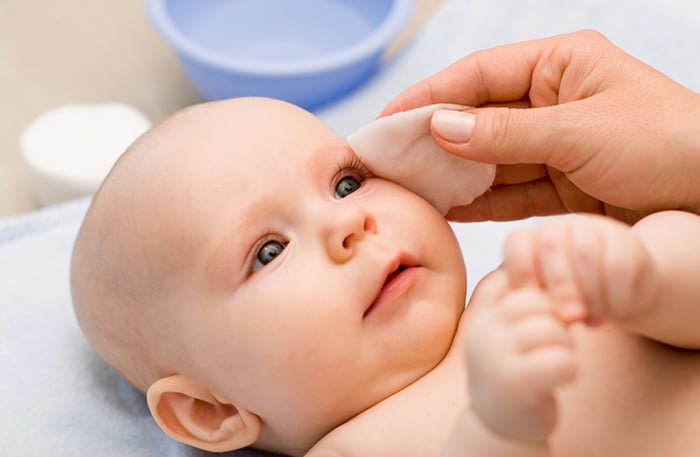
care of your nose every day so that snot does not clog the mucous membrane and interfere with normal breathing. A newborn is characterized by a physiological runny nose, which goes away on its own by 2.5-3 months. At this age, the baby does not yet know how to blow his nose, so the baby’s nasal passages need to be cleaned. The nose can be cleaned with soft cotton swabs dipped in vegetable oil. Instead of cotton swabs, flagella from cotton swabs are also used, as they are softer and safer.
Liquid mucus is removed using light rotational movements with a stick or flagellum, dry mucus is removed using sea water. Sea water does not cause allergies and is safe for a newborn. It eliminates allergies, colds and other types of runny nose. How else to treat a runny nose, and how to properly clean a newborn’s nose, read here.
Ear care should be done very carefully and at least once a week. You only need to clean the outer ear, since the delicate ear canals of a newborn are easily damaged. To clean, take soft cotton swabs and soak them in water, then gently wipe your ears.

Facial care is carried out after you have cleaned your nose, eyes and ears. Wipe your baby's face with wet wipes or wash with running water. In addition, you can use a special chamomile decoction. To do this, pour two tablespoons of dry chamomile into a liter of boiling water and let it brew for half an hour. Moisten a cotton pad with the infusion and wipe your face. After washing, it is important to wipe the skin dry using disposable wipes.
Caring for the umbilical wound is needed in the first days of a newborn’s life, since the wound heals 10 days after birth. Sometimes she bleeds at this time, which is normal for babies. For processing, take hydrogen peroxide 3% and brilliant green. Soak a cotton swab or swab in peroxide and wipe the navel area. Remove dry crusts when they soften. Then clean the wound again with peroxide, dry it and treat it with brilliant green.
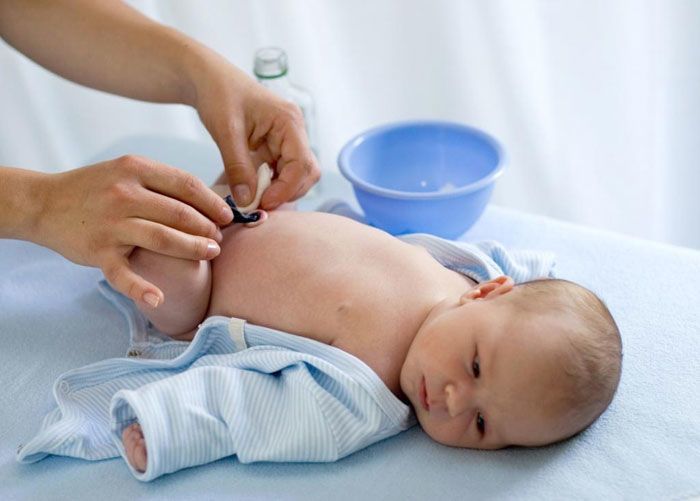
Intimate hygiene is also very important for a newborn. Washing the genitals and buttocks is done with warm water without soap, and wiping is best done with dry wipes, since towels dry out and irritate the skin. In addition, disposable wipes are more hygienic. After drying, the skin and skin folds are treated with special products, which can be used as baby diaper creams or powders containing talc.


